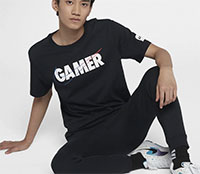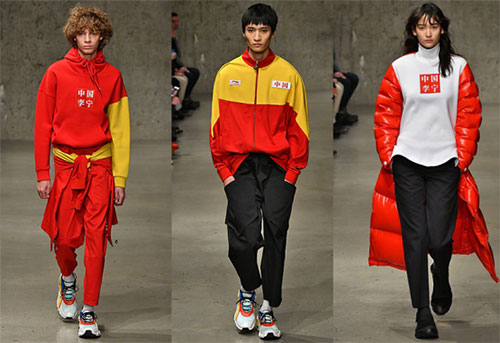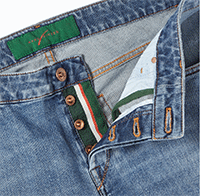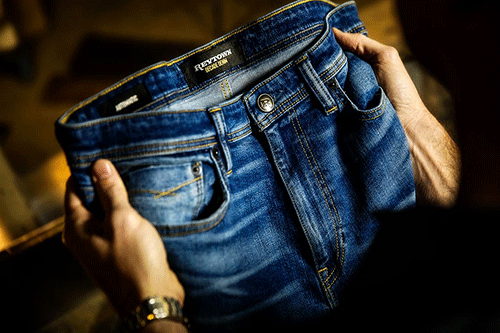FW
The United Nations Industrial Development Organisation plans to work 50 garment factories by 2021 to cut energy consumption by 20 to 30 per cent and water use by 10 per cent. For this, the organisation recommends factories to adopt new technologies and better training to make the industry more competitive, productive and efficient.
Hak Sokchea, National Project Coordinator of the organization says, improving resource efficiency in factories and industries could offset any expense caused by current uncertainty over the withdrawal of the European Union’s Everything-but-arms (EBA) privilege from Cambodia. It would also be better for humans and the environment.
Andrew Tey, Director of the Cambodia Garment Training Centre Institute (CGTI), believes productivity of these factories is improving every year with many factories now investing in new equipment and training staff to improve competitiveness and productivity. These factories by further improve their efficiency and productivity by as much as 65 to 75 percent through better training.
"Making history in the Chinese e-sports industry, global sportswear brand Nike signed a four-year exclusive apparel sponsorship deal with TJ Sports on February 28, 2019. The deal industry supply of sports apparels for China’s League of Legends Pro League (LPL), running until 2022. This deal includes supply of Nike branded clothes and shoes for all LPL players, coaches, referees, and team managers."
 Making history in the Chinese e-sports industry, global sportswear brand Nike signed a four-year exclusive apparel sponsorship deal with TJ Sports on February 28, 2019. The deal industry supply of sports apparels for China’s League of Legends Pro League (LPL), running until 2022. This deal includes supply of Nike branded clothes and shoes for all LPL players, coaches, referees, and team managers.
Making history in the Chinese e-sports industry, global sportswear brand Nike signed a four-year exclusive apparel sponsorship deal with TJ Sports on February 28, 2019. The deal industry supply of sports apparels for China’s League of Legends Pro League (LPL), running until 2022. This deal includes supply of Nike branded clothes and shoes for all LPL players, coaches, referees, and team managers.
Post the signing of the sponsorship deal, Nike unveiled its first LPL co-branded T-shirt to the public called ‘Gamer’. The brand unveiled all 16 LPL team uniforms, featuring a general “wide V style” with the Nike Swoosh and LPL logo in September. It also released an LPL co-branded streetwear apparel collection, including t-shirts, hoodies, and shoes.
Li-Ning stays away from e-sports sponsorship
Unlike Nike, Chinese sportswear brand Li-Ning has not shown any interest in sponsoring esports. The brand first entered the esports domain in October 2018 when it sponsored the Chinese esports organisation Edward Gaming’s (EDG) League of Legends team. The deal ended after Nike and LPL announced their sponsorship. In the next couple of months following the deal, Li-Ning sponsored multiple esports teams including Newbee, OG Happy, Hero, YTG, RNG’s Dota 2 team, and even the South Korean esports organisation Team Griffin, providing not only the team jerseys but also exclusive joint apparel and footwear lines.
entered the esports domain in October 2018 when it sponsored the Chinese esports organisation Edward Gaming’s (EDG) League of Legends team. The deal ended after Nike and LPL announced their sponsorship. In the next couple of months following the deal, Li-Ning sponsored multiple esports teams including Newbee, OG Happy, Hero, YTG, RNG’s Dota 2 team, and even the South Korean esports organisation Team Griffin, providing not only the team jerseys but also exclusive joint apparel and footwear lines.
Li-Ning also indirectly owns an LPL team called LNG Esports which was acquired by Viva China Sports in January. Viva China Sports is a sports subsidiary of Viva China Holdings Ltd., which is partly owned by Chinese entrepreneur and the founder of Li-Ning, Li Ning.
Competition for apparel sponsorship heats up
Nike and Li-Ning have both invested large amounts of capital in Esports. Nike has signed an apparel sponsorship with LPL valued at¥50M ($7.48M)a year, including cash and equivalent products. However, despite the financial terms of multiple undisclosed sponsorships and the acquisition of Snake Esports, the cost of building LNG Esports’ home venue for L-Ning is as high as is ¥30M ($4.36M).
Additionally, due to the exclusive apparel sponsorship between Nike and LPL, Li-Ning had no rights to provide team jerseys for LNG Esports, or sponsor any LPL teams. In order to deal with this issue, the brand has started endorsing EDG’s League of Legends players.
Two days after Nike launched its “Nike X LPL” co-branded uniforms, Li-Ning and League of Legends Champions Korea (LCK) team Team Griffin unveiled their co-branded team jerseys for the 2019 LoL World Championship. These jersey have Griffin’s sponsor logos and parent company STILL8’s logo printed on them.
Similarly, soon after Nike and LPL launched their first co-branded Gamer T-shirt, Li-Ning responded, by designing its esports apparel line under a general name: “中国选手” [English terms: Chinese Professional Player]. The company, which owns esports organisaation LNG Esports and sponsors multiple esports organisations and players, is focusing on the players.
On the other hand, Nike more likely wants to investigate what kind of positive characteristics gamers have, and justify video gaming to the public in a way that is not characterised as a negative habit or seen as shameful. Thus both these companies are focusing on the core value of e-sports; albeit in different ways.
 The average five-pocket jean is going through a transformation with denim brands and designers taking creativity to new levels through innovative fabrics and designs. Increasing competition from the athleisure category has made denim brands realise the need to innovate their offerings in order to stay relevant in a competitive market. As the chief industry advisor of the NPD Group noted earlier this year, women today want to wear more than just leggings and yoga pants. To inspire these women to buy new jeans, denim marketers need to find new ways to design their jeans and deliver products that appeal to their tastes.
The average five-pocket jean is going through a transformation with denim brands and designers taking creativity to new levels through innovative fabrics and designs. Increasing competition from the athleisure category has made denim brands realise the need to innovate their offerings in order to stay relevant in a competitive market. As the chief industry advisor of the NPD Group noted earlier this year, women today want to wear more than just leggings and yoga pants. To inspire these women to buy new jeans, denim marketers need to find new ways to design their jeans and deliver products that appeal to their tastes.
A recent NPD Group survey reveals 364 million pairs of women’s jeans were purchased in the US in the 12 months ending February 2019. Amongst all brands, Levi’s is still the most favorite for one-third consumers; followed by Lee, Wrangler, American Eagle, Old Navy, Gap, Calvin Klein and True Religion.
New styles at the New York Fashion Week
Denim was also the point of discussion at the New York Fashion Week’s Spring/Summer 2020 shows. At the show, the Brock Collection showcased its wide-leg denim jeans with light and airy gowns, while Rag & Bone’s introduced ultra-short denim skirts, tiny shorts, waistband-less jeans and a ragged-edged denim vest. Prabal Gurung went with denim work jackets, overalls and dresses. And Brandon Maxwell showed jeans with ripped knees and frayed bottoms, a classic denim shirt paired with leather pants, and a full-body look that paired a rolled-sleeve work shirt with matching deep blue jeans.
wide-leg denim jeans with light and airy gowns, while Rag & Bone’s introduced ultra-short denim skirts, tiny shorts, waistband-less jeans and a ragged-edged denim vest. Prabal Gurung went with denim work jackets, overalls and dresses. And Brandon Maxwell showed jeans with ripped knees and frayed bottoms, a classic denim shirt paired with leather pants, and a full-body look that paired a rolled-sleeve work shirt with matching deep blue jeans.
Unusual detailing fuels denim purchases
These shows also introduced new denim styles such as painted and sequined jeans and rompers that were showcased by the brand No Sesso at its runway show. Similarly, Alexander Wang exhibited denim shirts with leather collar and plackets, as well as blue jeans overlaid with leather and suede chaps. Kaimin showcased an adjustable-length denim skirt, jeans with metallic and embroidered appliques and denim bottoms that looked as if the pant legs were breaking away, leaving only tiny shorts. EDGII delivered extra wide-leg jeans, as well as bottoms with flyaway pant legs that split at the knee. And Alice + Olivia collaborated with designer Everard Best of the men’s wear labels Murder Bravado and Who Decides War, on a collection of hand-embroidered, dyed, and distressed denim. Designers are banking these innovative styles and unusual details to keep consumers coming back for more of what the denim category has to offer.
However, despite these innovations, designers need to remember that consumers still value traditional features in their denim. As a Monitor Research reveals, 9 out of 10 consumers rank comfort, fit, quality, durability and price as being the important parameters for their denim purchase decisions followed by style and color.
Indorama Ventures (IVL), a global chemical producer recently announced its commitment as part of the ‘New Plastics Econom’y to help create a world where plastic never becomes waste. The company is now accelerating its efforts in support of a very ambitious goal to increase recycled content volumes by at least 750,000 tonne, while also recently pledging $1.5 billion towards achieving this target by 2025.
Indorama Ventures is among 400 organisations committed to eliminate problematic plastic packaging, and increase the use of recycled plastic in packaging. The New Plastics Economy Global Commitment calls on companies and governments to innovate solutions enabling plastic to be 100 per cent reusable, recyclable, or compostable. The Ellen MacArthur Foundation and the UN Environment Programme have released the first New Plastics Economy Global Commitment progress report, which reveals signatories’ efforts to manage plastic waste and pollution.
IVL wishes to invest globally in the circular economy and in new technologies that can steer further its aspiration of being a world-class chemical company making great products for society. The Company announced a joint venture with Loop Industries aimed at commercialising their chemical recycling technology for sustainable PET packaging resin and Polyester fibers. In June 2018, the company also unveiled its partnership with Ioniqa Technologies, together with Unilever Europe, to unlock the potential of PET recycling with ground-breaking technology to pioneer a new approach to processing PET waste as renewed feedstock for virgin PET.
The Fashion Pact recently added 24 new members such as Auchan Retail, Bally, Calzedonia, Celio, Darmartex Group, Decathlon, Eralda, Etam Group, Farfetch, Mango, Gant or Geox. The new representatives met recently in Paris to discuss the plan that each member must carry out and translate sustainable commitments into practical and achievable goals like carbon footprint reduction and the use of water.
Fashion Pact is backed by the different actors in the industry, from luxury to retailers, sports and fast fashion. Among the companies are Inditex, Adidas, Bestseller, Burberry, Capri, Carrefour, Chanel, Fung Group, Gap, Giorgio Armani, H&M, Hermès, Kering, Nike, Nordstrom, Prada, PVH, Ruyi, Stella McCartney or Tapestry, among others.
The companies signed to work within the framework of the Science Based Targets (SBT) initiative, with scientifically measurable goals. This program is based on three points: stop climate change, restore biodiversity and protect the oceans.
Jeanologia and Browzwear are entering a partnership to ease out the denim making process and make it more efficient and sustainable. The software will allow the designers to visualise their creation with photographic-quality rendering of Jeanologia laser and eco-friendly finishes. Also, the instructions for production and finishing are included together so as to ensure that the results of the finished products look exactly like the digital one.
Jeanologia is a denim finishing technology specialist. Browzwear is a provider of 3D fashion design. This technology integration is just the first step in what Jeanologia and Browzwear envision as a partnership. Just as Jeanologia has been committed to reducing waste and prevent the contamination of the world’s precious water supply, Browzwear is keeping thousands and thousands of rejected samples and unsold styles out of landfills. At the same time, both want to encourage experimentation and creativity, and through this partnership, is confident designers will find freedom along with responsibility.
Browzwear’s pioneering 3D solutions for apparel design, development and merchandising are the key to a successful digital product lifecycle. Through the power of true-to-life 3 D, designers, developers, production and marketing can now collaborate effectively to get creative products to market faster than before. With Browzwear, brands and retailers around the world can connect people and processes, reduce iterations and samples and merchandise garments even before they are made.
Browzwear one of the leading fashion technology firm serving designers like Adidas, Tommy Hilfiger, and Nordstorm, etc, recently collaborated with laser-wash technology from Jeanologia, the creator of sustainable and eco-efficient technologies for the garment finishing industry.
The collaboration aims to provide fashion designers with tools for creating a sustainable future by working on production planning. It will draw blueprints on how production and lifestyle management can balance sustainable fashion and how sustainable clothing can be made without restricting creativity.
The 5th edition of Intex South Asia will be held at BMICH, Colombo, from November 13-15, 2019. The event will witness more than 200 quality suppliers from 12 countries and regions who will showcase top quality yarns, apparel fabrics, denim fabrics, chemicals, clothing accessories and allied services.
The Indian Pavilions at Intex South Asia will be organised by The Cotton Textiles Export Promotion Council Federation of Indian Export Organisations and Basic Chemicals, Cosmetics & Dyes Export Promotion Council under the Ministry of Commerce & Industry, Government of India. Also, Taiwan Textile Federation, KOTRA Colombo and The Indonesian Embassy in Sri Lanka will organise Smart Textiles Showcase Pavilions respectively at this edition.
The participation from India will grow by 30 per cent from last year making it the largest country pavilion with over 100 Indian companies that would exhibit with their latest product offerings to connect with the leading buyers from Sri Lanka, Bangladesh, India, and other international markets.
This year, Intex South Asia will introduce “Indian Textile Dyes & Chemicals Zone” which would be represented by leading textile chemicals, dyes intermediates, pigments and auxiliaries companies. With the growth of textile dyes and chemicals imports to Sri Lanka, Indian companies under this zone will find it fruitful to connect with their Sri Lankan counterparts to explore business opportunities. With the inclusion of this pavilion, Intex South Asia has successfully consolidated the textile value chain at a single global trading platform.
Some of the top companies participating this year include PT Sinar Para Taruna from Indonesia along with PT Kewalram International; Grasim Industries (Liva), Sangam Ltd., Birla Century, Garware Bestretch from India; PAK Denim Ltd. and MN Textiles from Pakistan, and Eco Transfer Prints and Sigiri Weaving Mills from Sri Lanka and Yetom New Materials and PHK Knitting from China. Also, from the buyers' side, Intex South Asia is inviting delegations from India, Bangladesh, Pakistan, Thailand, Middle East, Nigeria, Mauritius and more make it a truly global sourcing platform of South Asia.
For the first time, world-renowned organisation – Cotton Council International will partner with Intex South Asia as its Innovation Partner. This marks the entry of Cotton USA in Sri Lanka. Cotton USA will showcase the latest innovations which would be beneficial for the growth and development of the textile and apparel industry of the region. Alongside the exhibition, The Interactive Business Forum will deliver high-quality market intelligence to support industry efforts to upgrade, the value chain and better understanding for intra-regional trade to help manufacturers gain a competitive edge.
Arti Bhagat, Director, Worldex India said, “There is a clear shift from the west to the east. While the western economies are slowing down, the economies of South Asia are among the fastest-growing in the world. Industry and businesses are coming to this region and Intex South Asia is there to speed up this process while ensuring that genuine buyers from around the world meet with quality suppliers at the only international textiles sourcing show of South Asia.” Therefore, Intex South Asia is the perfect platform to take the industry forward.
Sangam’s net sales were Rs 489.88 crores during the period ended September 30, 2019, as compared to Rs 464.74 crores during the period ended June 30, 2019. Net profit was Rs 3.11 crores as against Rs 1.14 crores for same period ended June 30, 2019.
Net sales were Rs 489.88 crores during the period ended September 30, 2019 as compared to Rs 472.69 crores during the period ended September 30, 2018. Net profit reached Rs 3.11 crores in September 2019 as against Rs 9.16 crores for the period ended September 30, 2018.
Bangladesh will review the effectiveness of existing export subsidies. Alternative policy benefits will be looked at considering the country’s probable graduation from a least developed country to a developing one. The effectiveness of the existing export subsidies will be enhanced. Future export subsidies will be in line with World Trade Organisation rules and international best practices. Products under 37 categories will get cash incentives ranging from two per cent to 20 per cent in the current fiscal year.
Subsidies are given in various forms, mainly in cash incentives and duty and tax benefits, to exporters to promote diversification of export products and keep the country’s exports competitive in the international market. Almost all the export products including readymade garments, textiles, electronics, leather goods, jute, handicrafts and pharmaceuticals get cash incentives. Export-oriented industries, mainly the apparel sector, also get the bonded warehouse facility while others get duty drawback facilities. Cash incentives are usually given based on applications from the export-oriented sector. Currently, four sectors of readymade garments receive export incentives at four per cent. The subsidies and incentives given to export oriented sectors include agricultural subsidies, other agricultural input incentives and support cards including those for fertilisers and seeds, support for agricultural rehabilitation, agriculture credit at easy terms etc.












